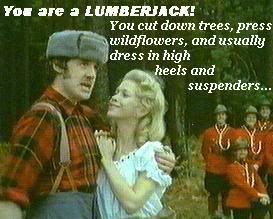Founder of Green Peace Goes Off On Leonardo DiCaprio
Another must read article!!
Green Peace founder says “cut down more trees.” I agree! My favorite quote from Patrick Moore is this one:
“I now find that many environmental groups have drifted into self-serving cliques with narrow vision and rigid ideology…. many environmentalists are showing signs of elitism, left-wingism, and downright eco-fascism. The once politically centrist, science-based vision of environmentalism has been largely replaced with extremist rhetoric. Science and logic have been abandoned and the movement is often used to promote other causes such as class struggle and anti-corporatism. The public is left trying to figure out what is reasonable and what is not.”
Wall Street Opinion Journal - Article
An inconvenient fact
Despite the anti-forestry scare tactics of celebrity movies, trees are the most powerful concentrators of carbon on Earth Dr. Patrick Moore is a co-founder of Greenpeace and chairman and chief scientist of Greenspirit Strategies Ltd. in
Patrick Moore, Special to the Sun
August 29, 2007
It seems like there's a new doomsday documentary every month. But seldom does one receive the coverage that
When we're bombarded anew with theatrical images of our earth's ecosystems when the film opens across B.C. this Friday, I'm concerned that we're losing sight of some indisputable facts.
Here's a key piece of information DiCaprio, collaborator and long-time activist Tzeporah Berman and the leadership of my old organization Greenpeace are ignoring when it comes to forests and carbon: For British Columbians, living among the largest area of temperate rainforest in the world, managing our forests will be a key to reducing greenhouse gases.
As a lifelong environmentalist, I say trees can solve many of the world's sustainability challenges. Forestry is the most sustainable of all the primary industries that provide us with energy and materials. Rather than cutting fewer trees and using less wood, DiCaprio and Berman ought to promote the growth of more trees and the use of more wood.
Trees are the most powerful concentrators of carbon on Earth. Through photosynthesis, they absorb CO2 from the atmosphere and store it in their wood, which is nearly 50 per cent carbon by weight. Trees contain about 250 kilograms of carbon per cubic metre.
North Americans are the world's largest per-capita wood consumers and yet our forests cover approximately the same area of land as they did 100 years ago. According to the United Nations, our forests have expanded nearly 100 million acres over the past decade.
The relationship between trees and greenhouse gases is simple enough on the surface. Trees grow by taking carbon dioxide from the atmosphere and, through photosynthesis, converting it into sugars. The sugars are then used as energy and materials to build cellulose and lignin, the main constituents of wood.
There is a misconception that cutting down an old tree will result in a net release of carbon. Yet wooden furniture made in the Elizabethan era still holds the carbon fixed hundreds of years ago.
Berman, a veteran of the forestry protest movement, should by now have learned that young forests outperform old growth in carbon sequestration.
Although old trees contain huge amounts of carbon, their rate of sequestration has slowed to a near halt. A young tree, although it contains little fixed carbon, pulls CO2 from the atmosphere at a much faster rate.
When a tree rots or burns, the carbon contained in the wood is released back to the atmosphere. Since combustion releases carbon, active forest management -- such as removing dead trees and clearing debris from the forest floor -- will be imperative in reducing the number and intensity of fires.
The role of forests in the global carbon cycle can be boiled down to these key points:
In Deforestation, primarily in tropical forests, is responsible for about 20 per cent of global carbon dioxide emissions. This is occurring where forests are permanently cleared and converted to agriculture and urban settlement.
In many countries with temperate forests, there has been an increase in carbon stored in trees in recent years. This includes the
The most important factors influencing the carbon cycle are deforestation on the negative side, and the use of wood, from sustainably managed forests, as a substitute for non-renewable materials and fuels, on the positive side.
To address climate change, we must use more wood, not less. Using wood sends a signal to the marketplace to grow more trees and to produce more wood. That means we can then use less concrete, steel and plastic -- heavy carbon emitters through their production. Trees are the only abundant, biodegradable and renewable global resource.
DiCaprio's movie, The 11th Hour, is another example of anti-forestry scare tactics, this time said to be "brilliant and terrifying" by James Christopher of the London Times.
Maybe so, but instead of surrendering to the terror, keep in mind that there are solutions to the challenges of climate, and our forests are among them.
This film should be a good, clear reminder for us to put the science before the
Dr. Patrick Moore is a co-founder of Greenpeace and chairman and chief scientist of Greenspirit Strategies Ltd. in
